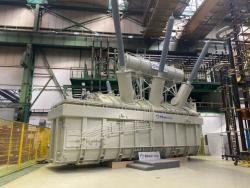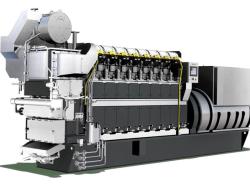
OR WAIT null SECS
© 2024 MJH Life Sciences™ and Turbomachinery Magazine. All rights reserved.
Single seals for caustic environment in pumps
Pumps in petrochemicals have to often deal with a caustic environment. Since caustics are pure solids, caustic solutions will form crystals as the liquid is evaporated and the caustic concentration increases past the solubility point. These crystals can cause concerns for a mechanical seal and will lead to a reduction in performance and seal life.
This article contains excerpts from the paper, "Caustic processes: Application and implementation of successful sealing strategies" by Kyle Stoner of John Crane and Daniel Grooms of Akzo Nobel Functional Chemicals.
Caustic fluids are simpler than some other corrosives in that the corrosiveness of the process is directly related to the concentration and the temperature. So as the fluid becomes hotter and/or more concentrated, it becomes more corrosive. From a seal design standpoint, these properties can compound to increase the chances of failure. For example, a caustic solution in water exposed to elevated temperature can be more corrosive due to the higher temperature. Also, the higher temperature could cause more water to evaporate, concentrating the caustic, also increasing the corrosiveness. Finally, if the situation continues, the concentration of the caustic can increase above its solubility limit, causing it to crystalize and generate solids on the sealing surfaces. Besides causing general corrosion, caustic fluids can also cause “caustic embrittlement”, a specific type of localized corrosion most commonly seen in carbon steel.
Being a localized corrosion, it is frequently not detected by periodic wall-thickness measurements which are aimed at detecting generalized corrosion.
The most common seal arrangement found in caustic applications is a single seal. Single seals used in caustic applications can be found in all varieties, namely: elastomeric bellows, metal bellows, and pusher styles. The first two seal types discussed are referred to as non-pusher designs because their secondary sealing elements are static. This means that the element does not move axially with the adjustment of the primary ring, but rather it seals in only one axial location on the shaft after proper working height has been achieved.
The seal faces used in the non-pusher seal designs are often very simple geometries. This is because the primary ring itself is short and is affected less by pressure and thermal distortions. The face of the primary ring is typically plain in appearance; although some seal manufacturers incorporate patterns caused by etching or slots and grooves caused by machining to aid in face lubrication.
Elastomeric bellows use a single large coil spring as the load element which applies pressure to close the seal faces at low pressures, an elastomeric bellows to provide a static seal against the shaft and the primary ring with a convolution that enables it to flex and adjust with movement needed in the seal caused by axial movement of the shaft or pressure increases in the process. The advantages of a seal type using a single coil spring, with an elastomeric bellows, stem from its physical design and its adaptability to multiple pump designs.
From the purely physical aspect of the seal, one advantage of a single spring is that it resists clogging and corrosion better than a seal using multiple smaller springs. This seal type has a small cross section which allows it to be used in small seal chambers commonly found in older equipment. On the other hand, one disadvantage of this seal type is that due to its single spring design, it is unable to provide an even force to the primary ring which can lead to uneven face loading.
Another disadvantage is the availability of the elastomeric bellows to be formed in a select range of materials which limits its ability to be used in certain process streams. It should also be mentioned that Metal bellows most commonly use metal plates that have been formed to a desired geometry and are welded together. This procedure provides both a sealing and loading element to the seal. For the static sealing components, this seal design can incorporate either an elastomeric O-ring, or a press-formed graphite packing ring. The choice for the static sealing component is dependent on temperature and process compatibility with the component.
API 682 refers to a metal bellows using an elastomeric O-ring as a secondary sealing device as a Type B seal, and those that use graphite are referred to as a Type C seal. This seal design can be used at higher temperatures due to its ability to be used without an elastomer. One advantage of this seal design is that there is no dynamic O-ring, but rather a series of plates that flex providing axial movement to the seal. In a properly installed seal, these plates will provide an evenly distributed load to the seal faces. For high-concentration caustic applications where the caustic could precipitate out of solution, a rotating bellows design is ideal. This is because by spinning the bellows the convolutions between each plate will have a higher probability of remaining clear of debris.
Metal bellows seals also have the physical characteristic of having a small cross section allowing them to fit in smaller seal chambers commonly found in older pieces of equipment. A major disadvantage of metal bellows seal types is that they can be limited by their pressure capabilities. These pressure capabilities can vary between seal suppliers and should be verified before selecting a metal bellows seal for an application.
Another disadvantage of a metal bellows seal is that a caustic process stream can create solid deposits on the plates and cause distortion to the seal as the plates are unable to evenly flex. This is a greater concern for stationary bellows and for pumps that can be in an idle state for extended periods of time and/or have a high caustic concentration that can be near the solubility limit.
The next single seal type discussed is referred to as a pusher design. Pusher seals use a dynamic secondary sealing element which adjusts with the axial movement of the primary ring. The seal faces used in a pusher seal design can have a relatively more complex geometry with multiple diameters and lengths. This is because the primary ring of a pusher seal is longer than those of a non-pusher seal and the geometry helps the ring to accommodate pressure and thermal distortions. It is more common to find pusher seals with patterns on the face than it is non-pusher seals.
API 682 refers to pusher seal designs utilizing multiple springs, a balanced insert and is internally mounted in a cartridge configuration as being a Type A seal. The API 682 Type A seal also requires an elastomeric O-ring to be used as the secondary sealing device. According to API 682, this is the preferred seal type for caustic applications. Outside of the API designation for Type A seals, many manufacturers have utilized other secondary sealing materials and designs to accomplish the same task as an O-ring for specific reasons or for specific sealing difficulties.
Pusher seal designs are most commonly designed utilizing an elastomeric O-ring. An O-ring is desirable because of its simple geometry, its ease of replacement, and depending on the material used, its cost. Pusher seal types also have the advantage of having a balance ratio that can be engineered to meet certain requirements of an application. Another advantage of the pusher seal design is that it can utilize a single large coil spring in applications with a lot of particulates that can foul a seal using multiple small coil springs. (While the advantages and disadvantages of a large single spring have been discussed, it is still a viable option for some customers who have a particularly difficult application with minimal support system options.)
Some disadvantages of a pusher seal design utilizing an O-ring are the potential for limited axial movement and chemical attack. Limited axial movement can be caused by particulates accumulating around the O-ring and limiting the ability of the elastomer to slide axially in response to changes in the pump and seal. This inability can be magnified further if the O-ring has become compression set. This refers to the O-ring no longer having a circular cross section but rather a square cross section. This can occur as a result of temperatures approaching the limits of the material, or by time as the O-ring is under a compressive load between the primary ring and the sleeve from the moment it is assembled. This increases the importance of having accurate process temperature data and of having sufficient cooling from the seal flush medium.
When particulates accumulate around the O-ring and the sleeve, an additional concern is realized. The particulates can begin to score the sleeve which can lead to a leak path under the O-ring. In addition to limited axial movement of the seal, an O-ring can be chemically attacked. The proper elastomeric material should be carefully considered as the corrosiveness of caustics increase with a rise in temperature or with an increase in concentration. Other pusher seal designs that do not use a dynamic O-ring instead rely on a more complex geometry and material to accomplish the same dynamic sealing task. Some examples include the use of PTFE (Polytetrafluoroethylene) wedges and chevrons.



